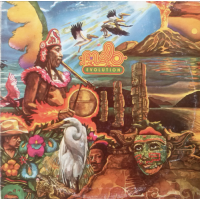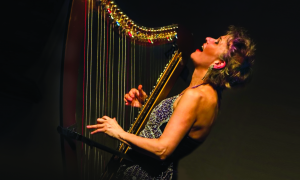
San Francisco is most often associated with happenings, the Grateful Dead, LSD, the free speech movement, face painting, free love, the Summer of Love, underground newspapers and comics, Janis Joplin and Big Brother and the Holding Company, Bill Graham, the Fillmore Auditorium, Jefferson Airplane, the Matrix, Carlos Santana, Haight-Ashbury, Golden Gate Park, Timothy Leary, psychedelic art and concert posters, Steve Miller and City Lights Booksellers.
But San Francisco had a much more diverse music scene in the late 1960s and early 1970s. East Bay, across the San Francisco-Oakland Bridge, was a hotbed of bands that mixed styles, including soul, horn-driven funk, Latin, and Mexican-American rock. Even San Francisco was a hotbed of hybrids, fusing funk, rock, jazz and boogaloo. Perhaps the most sucessful of these fusion bands was Sly and the Family Stone and Tower of Power, both of which featured horns prominently.
One of the lesser-known Latin-rock bands in the city in 1970 was Malo, which means bad, as in wicked good. The band was a combination of two local bands—the Malibus and Naked Lunch. Malo was led by Richard Bean, Arcelio Garcia and Jorge Santana, the guitar-playing younger brother of Latin-rock guitarist Carlos Santana.
Malo in its original configuration lasted only until 1974. Then the band re-formed in 1981 and continues to play today. The original band recorded four albums for Warner Bros.—Malo, Dos, Evolution and Ascención. The first reached #14 on the Billboard 200, the second peaked at #62 and the last two sputtered at #101 and #188, respectively. Their singles were too sophisticated and instrumental-heavy to gain traction on AM radio.
But a listen to those singles today reveals a remarkable band akin to War. A great intro to Malo is a collection that came out on Omnivore Recordings in 2020—Malo: Latin Bugaloo, the Warner Bros. Singles. The album features 14 tracks, and each one has a different groove. One wonders if the band might have had a better shot if they worked harder on songwriting than jamming. On the other hand, the album provides us with a fascinating snapshot of San Francisco's musical brew in the ealry 1970s.
JazzWax clips: Here's Malo playing its biggest hit, Suavecito (Smooth), which reached No. 18 on Billboard's pop chart in 1972. Clearly, the Young Rascals Groovin' (1967), Tommy James and the Shondell's Crystal Blue Persuasion (1969) and War's All Day Music (1971) were inspirations...
Here's I Don't Know...
And here's Love Will Survive...
Bonus: Here's Malo performing Suavecito live...
But San Francisco had a much more diverse music scene in the late 1960s and early 1970s. East Bay, across the San Francisco-Oakland Bridge, was a hotbed of bands that mixed styles, including soul, horn-driven funk, Latin, and Mexican-American rock. Even San Francisco was a hotbed of hybrids, fusing funk, rock, jazz and boogaloo. Perhaps the most sucessful of these fusion bands was Sly and the Family Stone and Tower of Power, both of which featured horns prominently.
One of the lesser-known Latin-rock bands in the city in 1970 was Malo, which means bad, as in wicked good. The band was a combination of two local bands—the Malibus and Naked Lunch. Malo was led by Richard Bean, Arcelio Garcia and Jorge Santana, the guitar-playing younger brother of Latin-rock guitarist Carlos Santana.
Malo in its original configuration lasted only until 1974. Then the band re-formed in 1981 and continues to play today. The original band recorded four albums for Warner Bros.—Malo, Dos, Evolution and Ascención. The first reached #14 on the Billboard 200, the second peaked at #62 and the last two sputtered at #101 and #188, respectively. Their singles were too sophisticated and instrumental-heavy to gain traction on AM radio.
But a listen to those singles today reveals a remarkable band akin to War. A great intro to Malo is a collection that came out on Omnivore Recordings in 2020—Malo: Latin Bugaloo, the Warner Bros. Singles. The album features 14 tracks, and each one has a different groove. One wonders if the band might have had a better shot if they worked harder on songwriting than jamming. On the other hand, the album provides us with a fascinating snapshot of San Francisco's musical brew in the ealry 1970s.
JazzWax clips: Here's Malo playing its biggest hit, Suavecito (Smooth), which reached No. 18 on Billboard's pop chart in 1972. Clearly, the Young Rascals Groovin' (1967), Tommy James and the Shondell's Crystal Blue Persuasion (1969) and War's All Day Music (1971) were inspirations...
Here's I Don't Know...
And here's Love Will Survive...
Bonus: Here's Malo performing Suavecito live...
This story appears courtesy of JazzWax by Marc Myers.
Copyright © 2026. All rights reserved.






















